Why the hate? The curious case of the Girard Perregaux Laureato

In 2016, Girard Perregaux decided to revive an iconic collection in order to mark a special anniversary. The Swiss luxury watchmaker therefore made some subtle changes, both technically and visually, to bring one of its great classics back up to date. Today, the collection is available in a wide range of sizes and colors and, given the technical specifications, at a very compelling price point.
Nevertheless, not every enthusiast is as fond of the collection as its first impression might evoke, and even the accusation of a “poor man’s Royal Oak” arises occasionally. Is this really true?
Reason enough to dig ourselves through the history of this polarizing watch model.
Since 1975
Looking at the history of Girard Perregaux, which has its origins in La Chaux-de-Fonds, Switzerland, as early as 1791, the Laureato collection is comparatively young. The first Laureato was launched in 1975 as a quartz chronometer and in bicolor. Incidentally, it was named after the Italian film “The Graduate” (Italian: Il laureato), following the advice of the brand’s Italian distributor at the time. Also the design was the result of a young Italian architect from Milan by the name of Adolfo Natalini.
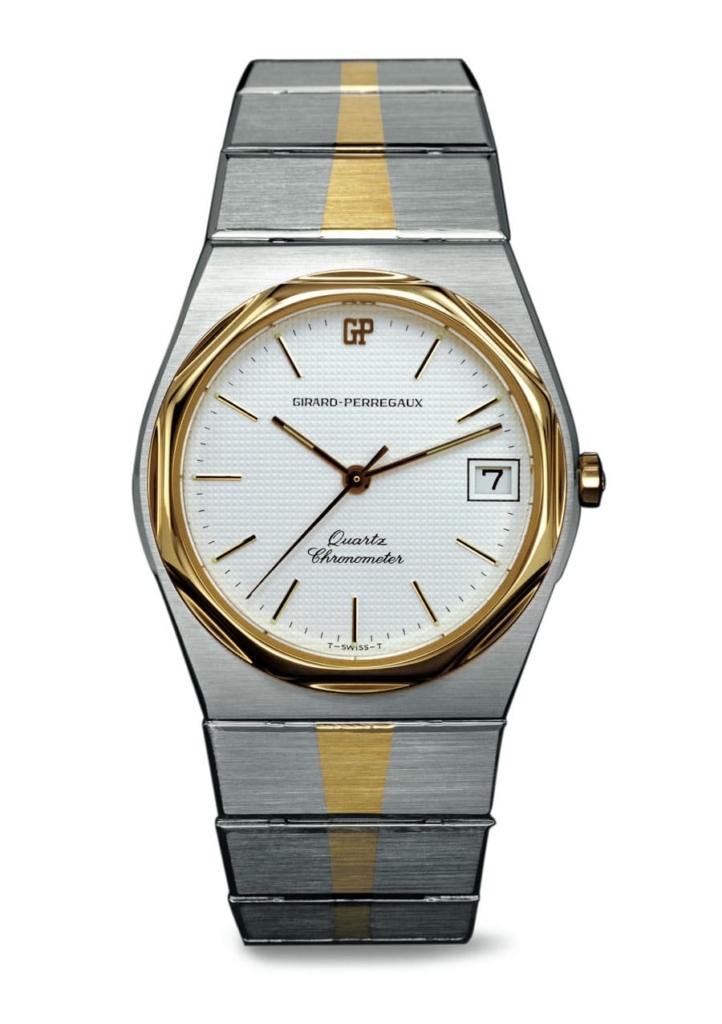
The choice of quartz movement may sound surprising by today’s standards, but it was a logical consequence of the spirit of the times and can be easily explained by the quartz crisis, in the midst of which the first Laureato was born. (Two years later, in 1977, Rolex also launched the first Rolex Oysterquartz by the way.) Quartz watches were simply en vogue!
Like the Royal Oak, which was introduced only three years earlier, the original Laureato also relied on an integrated bracelet with a slightly tonneau-shaped case. The most striking feature, however, was without doubt the unusual design of the bezel, which was henceforth octagonal. In contrast to the Royal Oak, however, it was not intended to resemble an old diver’s helmet. This explains the omission of the screws along the bezel. Instead, the focus was on the play of shapes and proportions, which is not least due to the Italian designer. The other significant difference was in the movements: The Laureato was equipped with an extremely slim quartz movement, on which the brand had been working since the 1960s, while the Royal Oak was powered by a mechanical caliber.
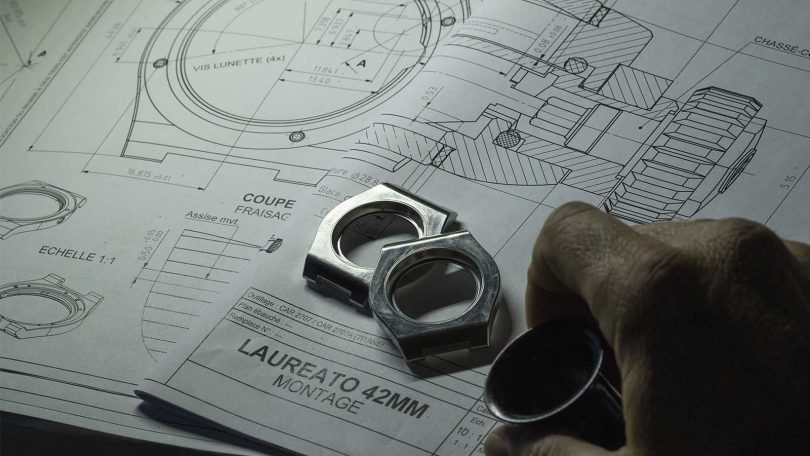
Even though new watches were added to the Laureato collection from time to time – most notably the sporty EVO 3 models in 2003 and the spectacular Blue Spinel Tourbillon with three bridges in 2012 – it still took a while before the collection was really re-envisioned from scratch.
The Laureato collection today
In 2016, Girard Perregaux celebrated its 225th anniversary. To mark the occasion, the Laureato collection was re-launched and extremely diversified, so that today the watches are available in an immense variety of shapes and colors. (You can find the complete overview here, but make sure to have some time on your hands.)
The case materials available range from obvious choices such as stainless steel, titanium and gold, but also include more exotic materials such as ceramics, carbon glass and even sapphire crystal. The selection of complications is similarly broad, including tourbillons, chronographs, perpetual calendars and world time indicators. All of this is accommodated in case sizes between 34mm and 45mm in diameter.
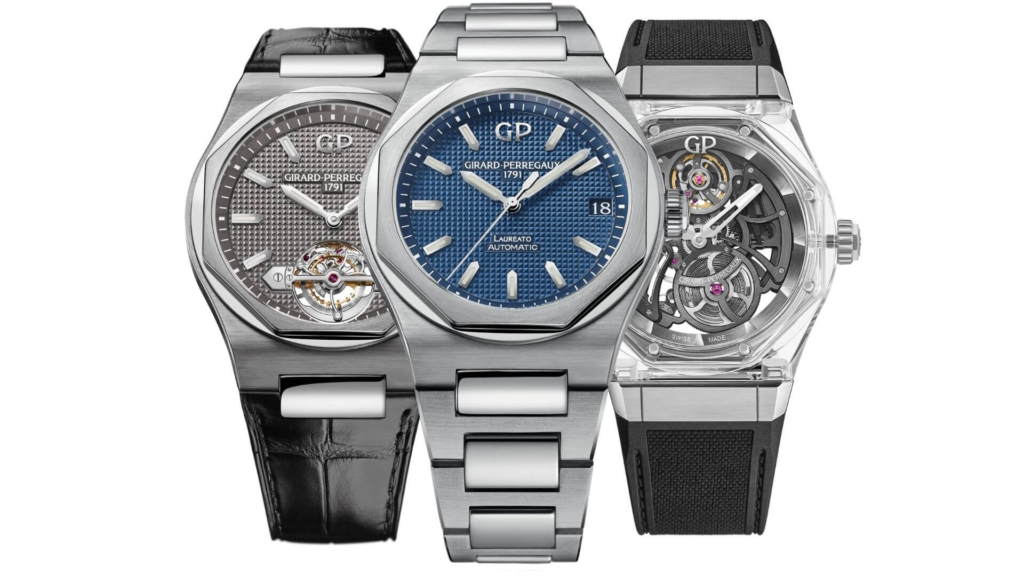
The majority of the classic Laureto watches boast a dial with a nifty waffle-shaped “Clous de Paris” pattern – a special type of guilloché dial that features small pyramid-shaped knobs. This is a dial style very similar to Audemar Piguet’s so-called “Tapisserie” dials, which brings us back to our initial question.
Genta copycat or 70s original?
So what to think of the Laureato collection: Bold genta copy or exemplary luxury sports watch of its era? Well, that is for everyone to decide for themselves of course, but we would like to give you a little food for thought along the way.
The similarity to Gérald Genta’s Royal Oak (1972) cannot be denied, although it is crucial to point out that this watch has only been launched three years prior to the original Laureato (1975). The Genta classics Patek Philippe Nautilus and IWC Ingenieur SL “Jumbo” (both from 1976) were not even conceived yet. Claiming that the Laureato simply jumped on the bandwagon that was already going at top speed is therefore not true.
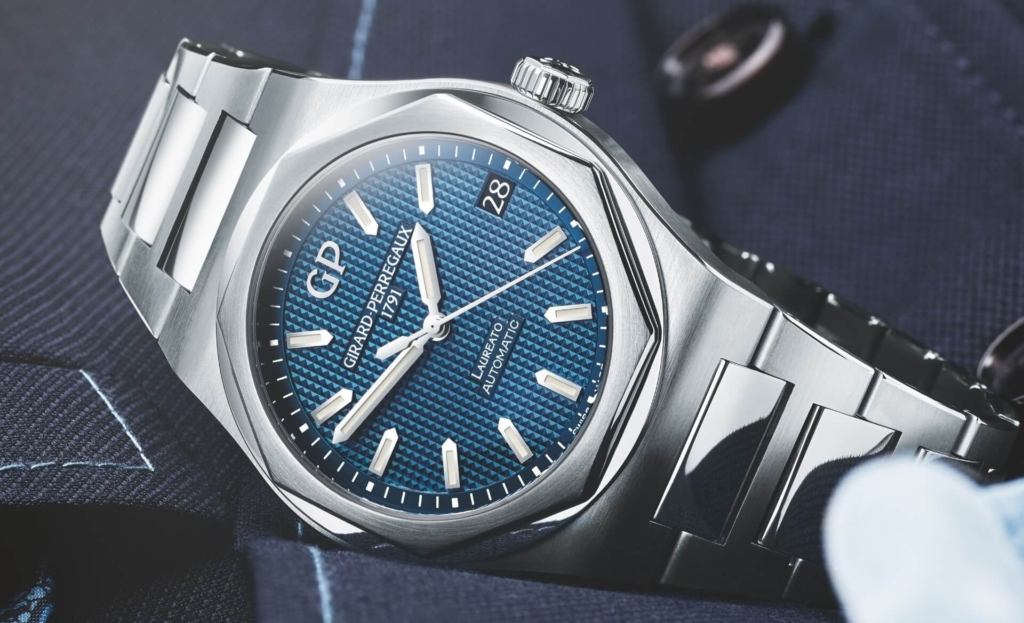
More importantly, however, is the fact that the Royal Oak was not exactly a resounding success – the opposite is true. When the first Royal Oak saw the light of day at Baselworld 1972, a time where the world was longing for affordable quartz watches that were available for little money, its price tag came a bit as a surprise (to put it mildly). 3750 Swiss Francs was roughly the equivalent of a gold Patek Philippe dress watch or 10(!) Rolex Submariners. The price-sensitive buyership thus did not see the point of spending such sums for a stainless steel watch, which explains why it took Audemars Piguet a good two years to sell the first 1000 Royal Oak pieces of its “A-series”. (You can learn more interesting facts in our Gérald Genta video with the watch expert Gisbert Brunner.)
In other words, the Girard Perregaux Laureato was published at a time when its stylistic role model was anything but successful. What interest should a brand have in copying an obvious flop?
Conclusion
Instead of simply pigeonholing the Laureato as a “Genta imitation”, why not start underlining the collection’s great value proposition and acknowledging Girard Perregaux’s strategic foresight in the 1970s? After all, it was GP who adopted this new (and controversial) kind of watch type first.
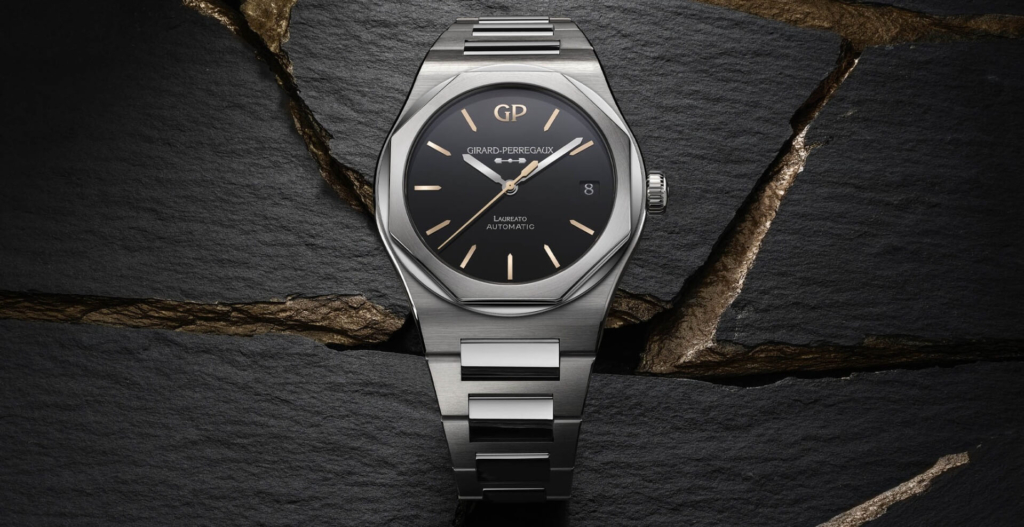
If you would like to learn more about the current Laureato models, make sure to check out our great selection in our shop.





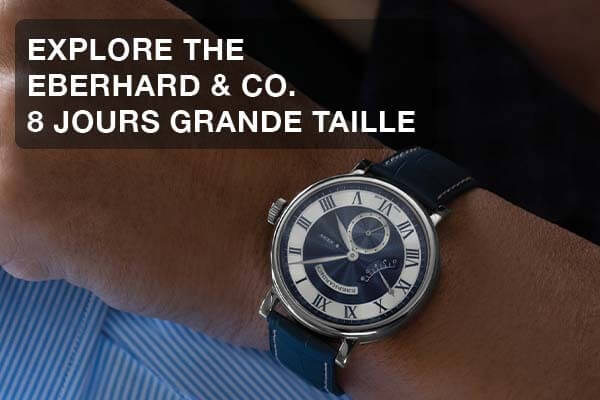
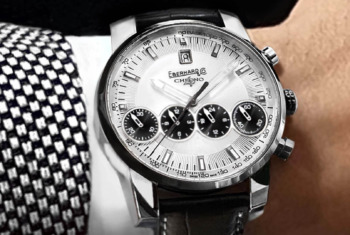
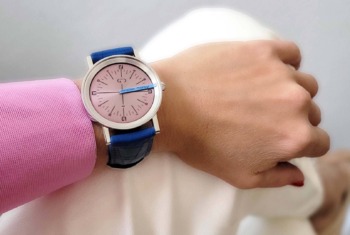
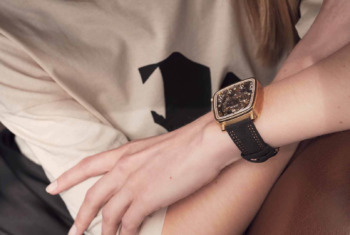
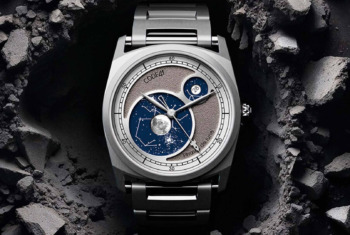
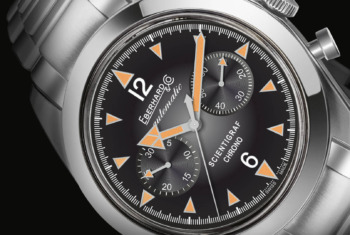
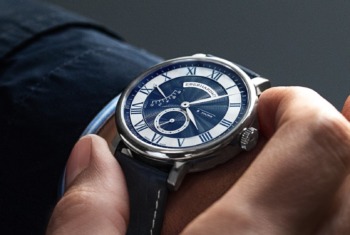
Completely agree, it’s an excellent watch. The 38mm version wears very similar to the SARB033 (which I currently own & love to death) I’ve heard and I think that this would be the perfect bigger brother one day.
Very interesting, I didn’t know it was produced before the PP.
Maybe a bit of a long stretch but who can’t say with certainty that Genta only went on with the Nautilus because he saw that the design is an apparent success?
I think we can all agree that you get 80% of a Royal Oak’s look/quality for 40% of the price.
It’s drop-dead gorgeous, I don’t care what other people think…
Screw the haters, the Laureato is a great watch!
Overrated copycat!
Some like to call the Laureato a copycat of the Royal Joke. I like to call it the 100m water resistant actual sport watch to the Royal Joke’s pathetic 50m pseudo sport watch. The 904L steel with a in house chronograph to the Royal Joke’s cheap-out 316L steel and third party modular chronograph in the case of their chronographs. The fully finished (brushed and highly polished) ceramic Laureato versus the simply brushed, half-done Royal Joke ceramic. The manly, sleek, industrial version to the Royal Oak’s soft blob of a bezel and effeminate bracelet that looks like women’s jewelry. The one people who aren’t gaudy rapper wannabes pick. The one without some tacky faux screws that doesn’t come in horrific bedazzled configurations. The Royal Joke is just that, a joke. A watch by a company famous for making one watch who got famous for making cases for other people’s movements, that was designed by a man whose own brand failed miserably and was subsequently scooped up by Bvlgari…..